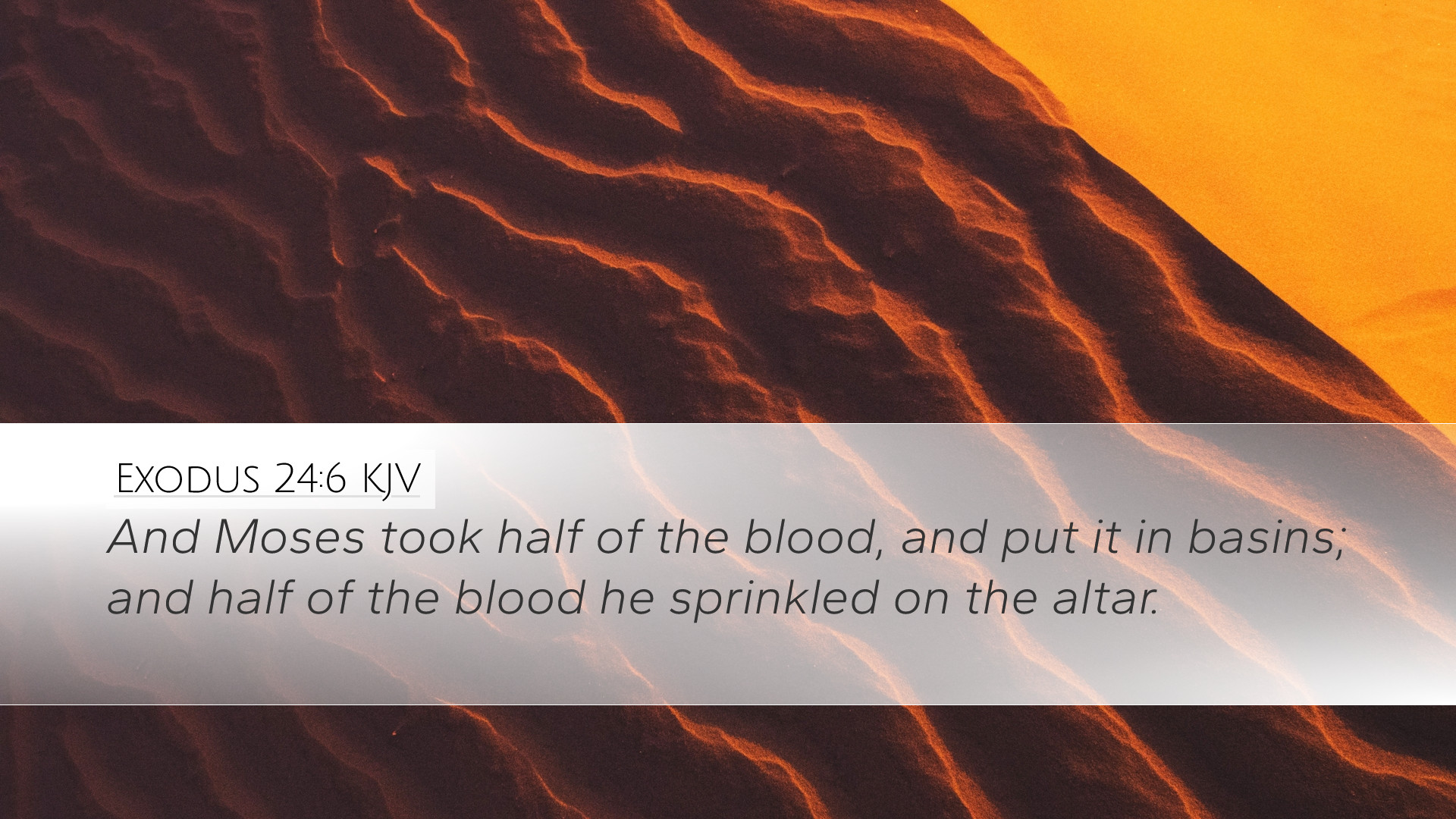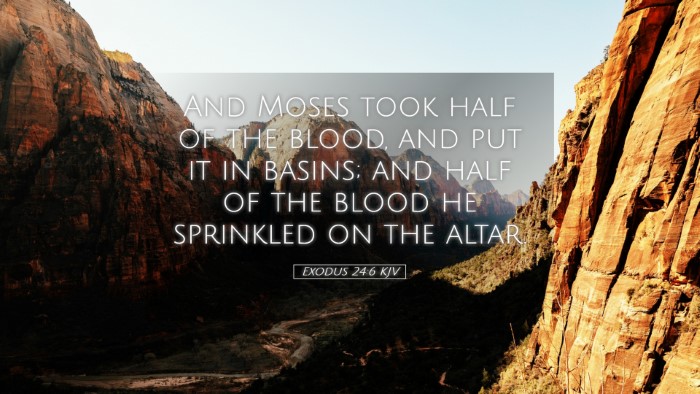Exodus 24:6 Commentary
Bible Verse: "And Moses took half of the blood and put it in basins; and half of the blood he sprinkled on the altar."
Introduction
The verse Exodus 24:6 is situated within the narrative of the establishment of the covenant between God and the Israelites. This moment is pivotal as it marks the formal acceptance of the Law and the covenant relationship that God initiates with His people. The act of sprinkling blood serves as a profound symbol of ratification and consecration.
Contextual Background
This verse occurs after Moses has ascended the mountain to receive the Law from God, following the admonition to the people in Exodus 19-20. It indicates a solemn ceremony where Moses acts as a mediator between God and Israel. The blood, an essential element in sacrificial rites, conveys both atonement and the sealing of the covenant.
Commentary Insights
Matthew Henry's Perspective
Henry emphasizes the significance of blood in Scripture as a means of atonement. He notes that the blood of sacrifices represents life; thus, the sprinkling of blood indicates the approach of the people to God through the means of reconciliation. It depicts God’s acceptance of their offerings and confirms the bond between the divine and the nation of Israel.
Albert Barnes' Observations
Barnes reflects on the ceremonial aspects of blood in the context of the Old Testament sacrifices. He highlights that the practice established a tradition of covenant-making, where the shedding of blood symbolizes deep commitment. In this act, Moses demonstrates obedience to God’s instructions, thereby solidifying the foundational relationship between God and His chosen people.
Adam Clarke's Exegesis
Clarke provides a detailed analysis of the significance of blood in covenant contexts. He posits that the blood not only signifies atonement but also serves as a witnessing element of the covenant. In Clarke’s view, the act is illustrative of the cost of maintaining a relationship with God—requiring sacrifice and commitment. He further discusses the concept that the altar represents the divine acceptance of the covenant.
Theological Implications
- Blood as Atonement: The blood signifies life and the necessity of atonement, reflecting the deeper theological principle that sin incurs a debt requiring payment.
- Covenantal Relationship: The act signifies a mutual agreement; God promises to be their God, and they promise to follow His statutes.
- Mediation of Moses: Moses acts as a type of Christ, serving as a mediator who facilitates access to God for the people.
Symbolism of the Blood
Throughout the Bible, blood serves as a powerful symbol of life and purification. This particular act of Moses is aligned with later New Testament themes where the blood of Christ becomes the ultimate sacrifice. The understanding of blood as a life-giving and covenant-confirming element binds together both Testaments.
Practical Applications
- Understanding Sacrifice: Modern readers are invited to consider the sacrifices in their lives in response to God’s covenant with them.
- Covenant Commitment: Reflecting on what it means to live under the new covenant in Christ, complete with its implications for grace and obedience.
- Mediation through Christ: The believer’s approach to God is made possible through Christ, who fulfills the role of Moses as our mediator.
Conclusion
Exodus 24:6 encapsulates the essence of covenant relationship between God and His people. Through the symbolism of blood, it communicates themes of atonement, obedience, and divine acceptance. Understanding this passage enriches our comprehension of sacrificial significance and anticipates the ultimate sacrifice in Christ, encouraging believers to honor their covenant with God.


